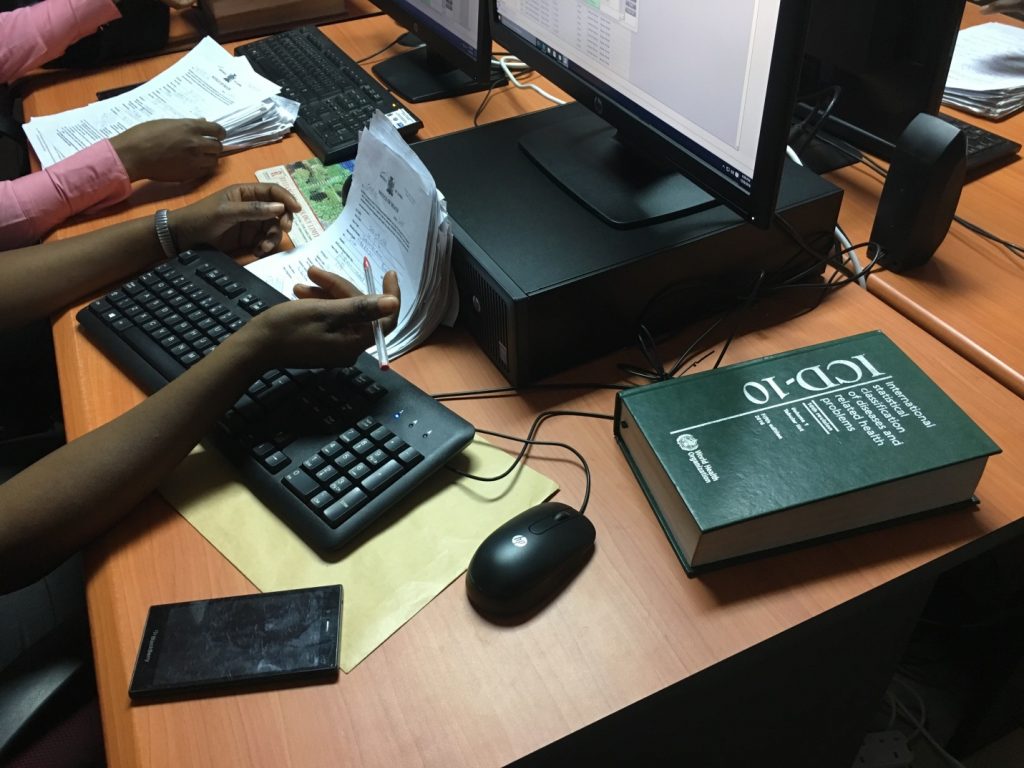Witnessing how a death gets registered in Zambia

By Adrienne Pizatella, Bloomberg Philanthropies’ Public Health team
Adrienne Pizatella from our public health team shares her trip to Lusaka, Zambia, where she witnessed how our Data for Health Initiative is helping to transform the country’s hundred-year-old system for recording deaths.
Why registering deaths is so important
The Bloomberg Philanthropies Data for Health Initiative partners with 19 countries to support the improvement of public health data. One of the biggest challenges is a lack of accurate data around deaths, with the World Health Organization (WHO) estimating that 65% of all deaths worldwide go unrecorded. Death registration is so important for countries because having accurate and up-to-date cause of death data allows governments, aid organizations, and public health leaders to set well-informed public health priorities for their country aiming to prevent more deaths and improve the health of the population.
Since we announced the Data for Health Initiative in 2015, we have partnered with 19 low- and middle-income country governments to improve health data, including a partnership with Zambia that was formalized in September 2015.
Zambia makes strides in registering deaths and cause of deaths
One of the key components of the Data for Health partnership with Zambia has been a focus on improving data on causes of death through improving medical certification. Before March 2016, it was estimated that only 4% of deaths were registered in Zambia. In 2013, only 818 deaths were registered. However, through the government’s strategic plan and the Data for Health partnership that number grew to more than 41,000 registered deaths in 2016. Key to Zambia’s success is the government’s commitment.
The Ministry of Home Affairs (MoHA) is responsible for registering deaths in the country. Peter Moyo, Principal Registrar for Birth, Marriage and Death Registration, stated “The Ministry of Home Affairs is committed to improving death and cause of death data in Zambia and the Bloomberg Philanthropies Data for Health Initiative aligns with our strategic plan to strengthen the Civil Registration and Vital Statistics system. We emphasize the importance of community engagement especially as many deaths occur outside of a health facility and are looking forward to beginning verbal autopsy through this partnership.”
And during my recent trip to Lusaka, I got to witness the progress, and the journey of how a death gets registered and a death certificate issued.
How does a death get registered in Zambia?
The beginning of the death registration process varies depending on where a person dies. For a death that occurs within a health facility a physician must provide information including the medical cause of death. As part of the partnership, physicians were trained for the first time to properly complete a medical certification of cause of death that meets international standards. Without these trained physicians, the correct cause of death would be difficult to know. However, if the death occurs outside of a medical facility, which a recent study shows nearly half of all deaths in Zambia do, a police report or a letter from the chief/headman must be provided.
No matter where the death happens, all deaths should eventually end up at this window within the MoHA.
After documents are validated by assistant registration officers, the form then makes its way to a team of trained coders who input information into a centralized system.
The WHO created international standards to correctly code causes of death called the International Classification of Diseases or ICD-10. This allows the government to digitize the information in a centralized system. Previously in Zambia, information had largely been kept in hard copies dating back to 1908, but now MoHA’s partnership with the Data for Health Initiative is working to change that.
This year, MoHA coders were trained to use the ICD-10 to register causes of death in Zambia. At the moment, only deaths that have been certified by a physician can be given a usable ICD-code for cause of death while deaths outside of a facility are given a code that does not indicate cause, and therefore is not usable for public health purposes. In both instances, after a death is coded and registered, a death certificate is issued to the family.
What’s next?
With a digitized system that includes coding consistent with international standards and more deaths being registered, Zambia’s policymakers are now better equipped to use data to prioritize health challenges, develop policies, deploy resources, and measure success. This partnership is continuing to further improve public health data in Zambia, and the next goal is to strengthen death data for deaths occurring outside of a health facility by implementing verbal autopsy in the near future. There has been so much progress made in improving the civil registration and vital statistics system in Zambia in a very short amount of time, but there is still more we can do to improve data and data use in the country.
To hear more about our Data for Health Initiative, be sure to listen to episode 3 of our Follow the Data podcast where Jennifer Ellis from our Public Health team speaks with Ties Boerma of the World Health Organization and Alan Lopez of the University of Melbourne on how Data for Health can help over one billion people in developing countries live healthier and longer lives.